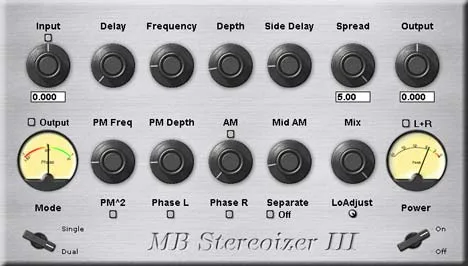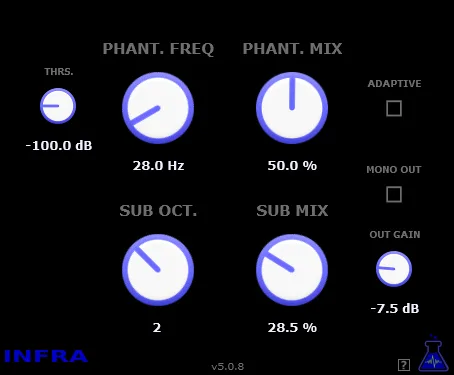Stereoizer by MB-PlugIns: Expand the Sound Space of Your Tracks
In modern music production, high-quality stereo imaging plays a key role. It allows you to give the mix volume, depth and width, create a sense of presence and better separate instruments in the panorama. However, we often encounter monophonic sound sources – this can be recorded vocals, an old synthesizer patch, a sample or a guitar track recorded through one microphone. Converting such a signal into full-fledged and live stereo can be a real challenge.
This is where the Stereoizer plugin from MB-PlugIns comes to the rescue. It is an easy-to-use but extremely effective tool, specially designed to solve the task of stereophoning a monophonic signal. But its capabilities are not limited to this.
How Stereoizer Works
At the heart of Stereoizer’s operation is a combination of two classic processing methods: modulated delay and amplitude modulation. These techniques are used to create small but important differences between the left and right channels of the signal. Modulated delay adds subtle changes in the time of arrival of sound to each channel, simulating natural acoustic effects, while amplitude modulation creates subtle variations in volume. It is these differences that are perceived by our hearing as stereo, expanding the sound image from a central point to a certain width.
Application in Practice
Stereoizer is a versatile tool that will find its place in any musical genre and at different stages of production. Here are some typical usage scenarios:
- Vocals: Convert one monophonic vocal track into rich and voluminous stereo, simulating the effect of doubling, but without the need to record it twice. This will add presence and scale to the main melody.
- Synthesizers and Pad Sounds: Even if the synthesizer patch is monophonic, Stereoizer can instantly give it width and air, allowing it to “sit” better in the mix without conflicting with central elements such as bass and drums.
- Guitars and Other Instruments: Monophonic recordings of acoustic or electric guitar, piano or other instruments can get a new life and volume thanks to this plugin.
- Expanding Existing Stereo: Stereoizer also works effectively with already stereophonic material, allowing you to further expand the stereo base and make the sound even more spatial if necessary.
More Than Just Stereo
In addition to its main function, Stereoizer has an interesting feature: if you set the output signal to mono, the plugin will create an effect similar to a classic chorus or flanger. This opens up additional possibilities for sound design, allowing you to get rich, “wavy” textures from a single plugin.
Additional Features for Full Control
MB-PlugIns developers have taken care of convenience and flexibility by integrating several useful features:
- Swap Channels: The ability to swap the left and right channels – useful if the original stereo signal has the wrong panorama.
- Phase Invert: Inverting the phase of one of the channels can help solve potential problems with phase relationships, especially when working with monophonic sources or checking mono-compatibility.
- Mono-ize Input: The function of mono-ization of the input signal allows you to make sure that the plugin receives exactly the mono signal for correct processing or for creative experiments.
- Monitor Signal (Bypass): The ability to listen to the signal without the plugin processing allows you to quickly compare the original sound with the processed one and assess the impact of Stereoizer.
Stereoizer by MB-PlugIns is a great example of how a simple interface can hide powerful capabilities. Whether you need to convert mono to stereo, expand an existing stereo image, or create interesting modulation effects, this plugin will be a valuable addition to your arsenal. It is available in VST format for the Windows operating system (Win32), making it compatible with many popular digital audio workstations.
Experiment with Stereoizer to give your mixes the volume and space they need!



